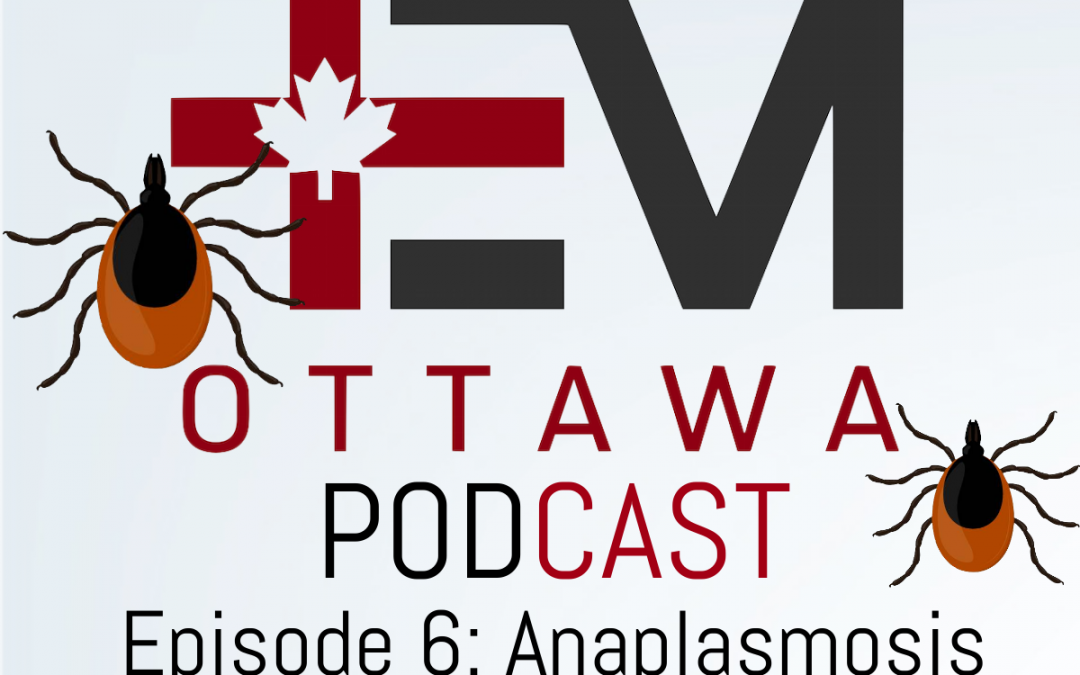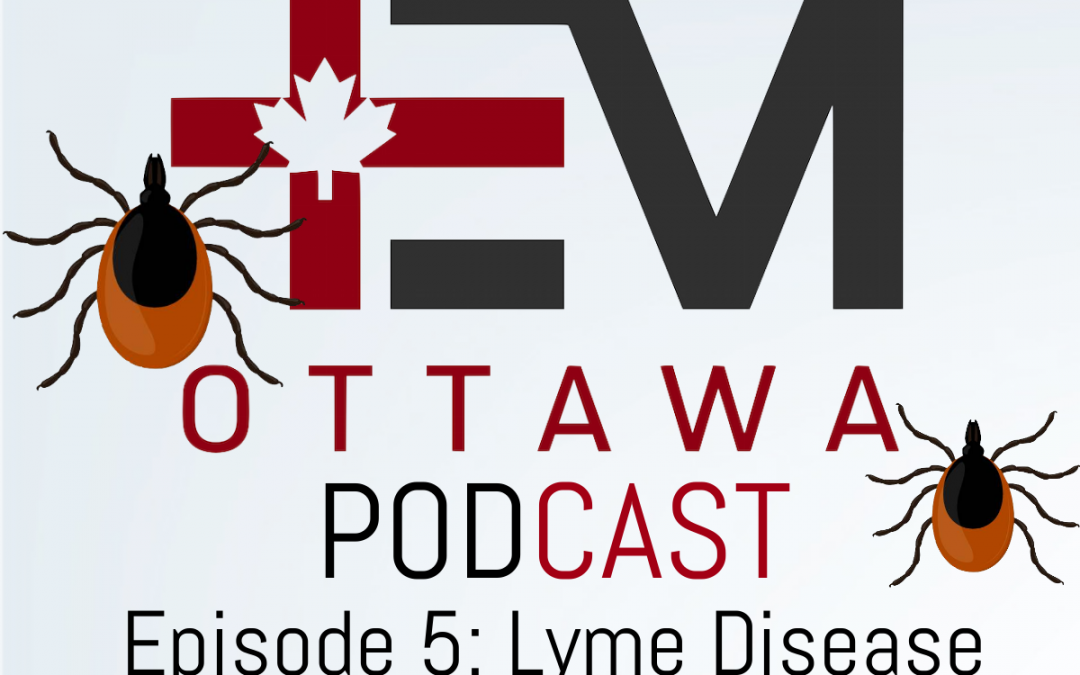
Episode 6: Tick Borne Illness Part 2 – Anaplasmosis
EMOttawa Podcast Episode 6
Tick Borne Illness Part 2 – Anaplasmosis
Click here for Part 1, focusing on Lyme disease.
In part 2 of our 2-part series on tick-borne diseases, Dr. Rajiv Thavanathan interviews Dr. Mikkey McGuinty, an infectious disease clinician-scientist on the topic of anaplasmosis. For a basic review of the disease and pathophysiology, we suggest our previous posts on lyme disease, vector borne illnesses part I and part II.
Introduction
Anaplasmosis is the broad name for diseases cause by the Gram-negative bacterium Anaplasma phagocytophilum. It is a tick-borne illness, carried by the same Ixodes Scapularis tick that can cause Lyme disease. In humans, it’s called HumanGranulocytic Anaplasmosis (HGA).
Why are we hearing about Anaplasmosis only recently?
Increased prevalence of ticks with climate change and the evolution of their habitat.
Up until 2020, many physicians had never seen HGA in Ottawa. There were 2 documented cases in Ontario over the last 5-years, both of which were in the Toronto region, which made sense given it’s proximity to the southernmost part of Ontario. Until recently clinicians were not routinely testing for it, and it’s likely that this represents an underestimation of the true prevalence. To date in 2021, there have been 5 documented hospital cases in the Ottawa region.
Epidemiology
- In Ontario and most of Canada, the same as Lyme disease. That is, tick endemic regions.
- Ticks in these regions are often found in areas with long grass and low brush.
- HGA is more common in Europe. It infects a different tick species (not Ixodes Scapularis), hence the difference in prevalence.
Classic Presentation
- Febrile, summer illness.
- No erythema migrans.
- Delayed presentation. On-average, illness occurs 1-2 weeks from exposure.
- Symptoms are general and can include fever, fatigue, myalgias, headache, and less commonly, GI symptoms of nausea, vomiting or diarrhea.
Populations at Risk
- Elderly (age >60), advanced HIV disease, or impaired T-cell immunity such as organ transplant recipients.
- Unlike Lyme disease, most people will have a self-limited illness. It doesn’t have as delayed a presentation.
- However, It can cause severe illness, including syndromes that look like septic shock because of cytokine response to the infection. You can have multi-organ system failure as a result, including brain disease, myocardial involvement, respiratory failure, severe hepatitis, renal failure.
- 3-5% morbidity, with a case fatality rate of ~1%.
Diagnostic Clues
- Cytopenia – particularly thrombocytopenia and leukopenia (less commonly anemia)
- Mild biochemical hepatitis
Advanced Testing
Bottom line: A challenging diagnosis to make in the ED. Needs to be a clinical diagnosis and confirmatory tests take a while to come back.
- Typically, morulae are found in the 1st 3-5 days of the infection, as opposed to later in the course.
- Serology can be ordered but is only diagnostic when paired. You need an acute sample while sick, and a paired convalescent sample to determine the antigen titre delta.
- PCR is the gold standard test, and the test of choice in regions with high prevalence.
- In the ED, this could be helpful for high-suspicion presentations that will be treated empirically or referred to infectious disease.
- A convincing clinical history, including tick exposure within the last 2-weeks now presenting with fever, myalgias and headache, with thrombocytopenia and biochemical hepatitis.
- In the ED, this could be helpful for high-suspicion presentations that will be treated empirically or referred to infectious disease.
Prophylaxis & Treatment
- Does doxycycline prophylaxis change the likelihood of developing HGA?
- No, at least we don’t have data for it.
- However, if they have risk factors (RF) for HGA, they have RF for Lyme disease, so if they meet tick criteria for doxycycline prophylaxis this should be given.
- Treatment is Doxycycline 100mg PO BID x 10-14 days.
- HGA is incredibly doxycycline sensitive, and the duration could be as short as 7-days, but we’re also concerned about treating Lyme disease.
- The ID physician’s joke: No one should die without a trial of doxycycline.
Ottawa Specific Testing
At TOH
- Epic doesn’t have HGA set up as a specific test for blood films
- If you’re planning to order microscopy and asking to look for morulae, call the hematopathology team to inform them that HGA is on your differential.
- Simply commenting on this in the EPIC comment section if often missed.
Take-Home Points
- Anaplasmosis, also known as HGA, is a tick-borne illness carried by the same tick that can cause Lyme disease.
- The classic presentation is a febrile summer illness, typically 7-days post tick exposure. Symptoms include fever, myalgias, headache, and less commonly, GI symptoms.
- While typically self-limited, populations at risk of complications are the elderly (age >60), advanced HIV disease, or those with impaired T-cell immunity such as organ transplant recipients.
- Suggestive lab abnormalities include thrombocytopenia, leukopenia, and mild biochemical hepatitis.
- Testing in the ED can include ordering microscopy by hematopathology to look for morulae, which are intraneutrophilic bacterial bodies, with peak sensitivity on days 3-5.
- PCR is the gold-standard test. For patients being treated empirically or referred to infectious disease, this can be considered.
- Treatment: Doxycycline 100mg PO BID 10-14 days.
- It’s never the wrong time to offer preventative care for tick-bites.

